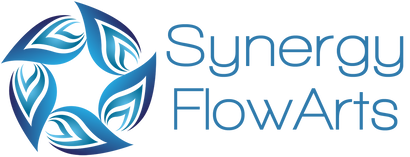Reverse your Current to Refresh your Flow
May 13, 2014 2 min read 1 Comment

As we develop our flow play through practice, we become aware that the art of learning is not always a steady upward curve. Sometimes we learn new skills with amazing speed and efficiency of effort. Sometimes it is a much longer and arduous process. From time to time we plateau, unable--it seems—to grow our practice at all. And then there’s those days where you put down your hoop and wonder woefully how on earth you could be worse at hooping than the day before!
Our bodies have an incredible control center—the brain—which initiates all movement in the body. This is accomplished through electrical signals which travel along neural pathways. Over time, repetitive movements reinforce these pathways, and many movements we make become nearly automatic. This is excellent for efficiency, but can hamper our creativity and ability to handle novelty.
Most of us have a dominant side (i.e. being right- or left-handed), and likewise most of us have a preferred “current” when we hoop (i.e. the hoop revolves clockwise or counter-clockwise around the core body). Because we tend to favor one side, over time that side has developed to be stronger physically and have a more established brain-body communication network, with the result that we learn new skills more easily with our dominant side.
Although the brain is a singular organ, the cerebrum has two distinct hemispheres and these hemispheres relate in a cross-connection to the body—the right side of the body is generally controlled with the left hemisphere of the brain, and vice versa. When we engage our non-dominant side, or practice in our non-dominant current, we stimulate underused areas of our brains and allow for new connections to be created. Reversing our current is a challenge, but it can also connect us more deeply with our creative energies.
- Start slowly to avoid frustration. If your non-dominant side is hopelessly uncoordinated (and for most of us it will be!), begin by incorporating small daily tasks first. Brush your teeth or use your computer mouse with your non-dominant hand. Walk up stairs leading with your non-dominant foot.
- Develop your hooping “vocabulary” on your non dominant side so that you can perform all tricks with both sides/currents. Attempting—and failing—to do established tricks with your non dominant side can open up a whole new realm of possibilities! Plenty of new tricks are created by simply trying to “save” the attempted trick when it goes awry.
- If there is a new trick you simply cannot master, try practicing it with your non-dominant side. Sometimes our movements become so habitual on our dominant side that it is difficult to observe the movement consciously. Shifting to the non-dominant side may make it easier to spot the problem(s) as we must focus more intently at a rudimentary level.
Ultimately, these practices will not only allow for a beautiful symmetry in your flow play and performance, but will also bring more balance to the body and mind. Through consistent practice, the brain will be stimulated toward greater creativity, increased spontaneity, and ready acceptance of novelty—all essential components to living in the flow!
-Dawn Anderoni, Lake Tahoe, CA
1 Response
Leave a comment
Comments will be approved before showing up.
Subscribe
Sign up to get the latest on sales, new releases and more …


Bex Burton
May 13, 2014
Yes! Great points!